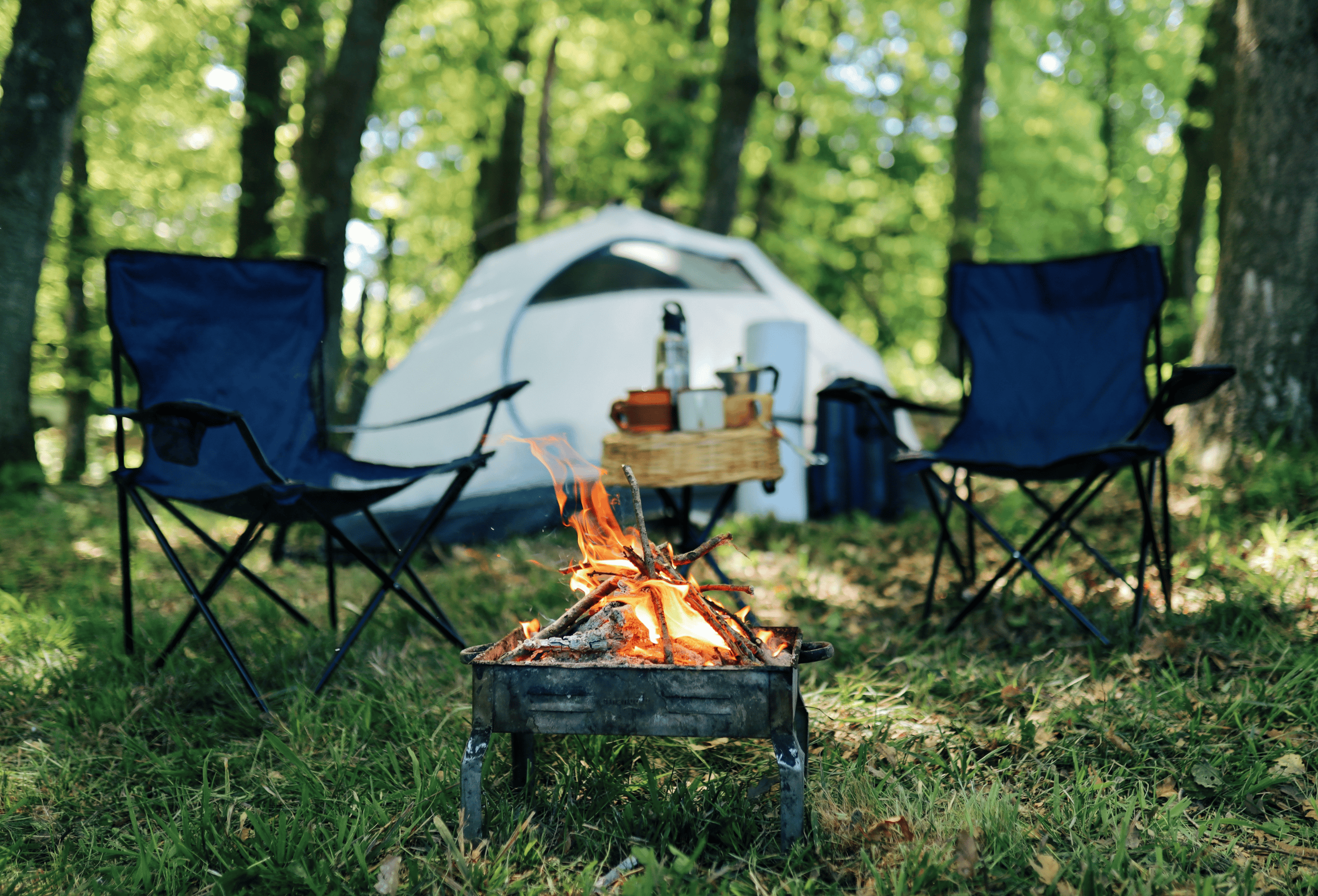27 Fall Camping Essentials I Never Skip (Tips Included)

If you’re looking for the best fall camping essentials and tips, you’ve come to the right place.
Fall is hands-down my favorite time to camp. The air is crisp, the trails are quiet, and the trees turn gold practically overnight. But it’s not all flannel and postcard views. Fall weather flips fast, and if you’re not prepped, it can go sideways quick.
Packing for fall camping takes a little more intention. Temps drop, daylight fades fast, and the margin for error gets smaller. After years of trial and error, I’ve narrowed down the gear I bring and the habits that make a real difference out there.
These essentials are what I rely on to stay comfortable, keep things simple, and make camp feel like home.
Must-Have Camping Gear:
– Fastest Jetboil: Jetboil Zip
– Most Durable Hiking Poles: Black Diamond Alpine Poles
– Best Backpacking Boots: KEEN Targhee Waterproof Boots
27 Fall Camping Essentials & Tips
This list is more than just gear; it’s part “wish I’d known” tips that come from real cold mornings, surprise storms, and late arrivals.
If you’re heading out for a quick weekend or a longer trip, take what fits your setup and leave the rest. If it made this list, it’s because it’s worth packing.
Sleeping Essentials
3-Season Tent with Full Rainfly
A sturdy tent is your first line of defense against unpredictable weather. Choose one with a full-coverage rainfly and bring a ground tarp or footprint to keep water from seeping in.
Tip: Pitch your tent at home before your trip to check for leaks or missing parts.
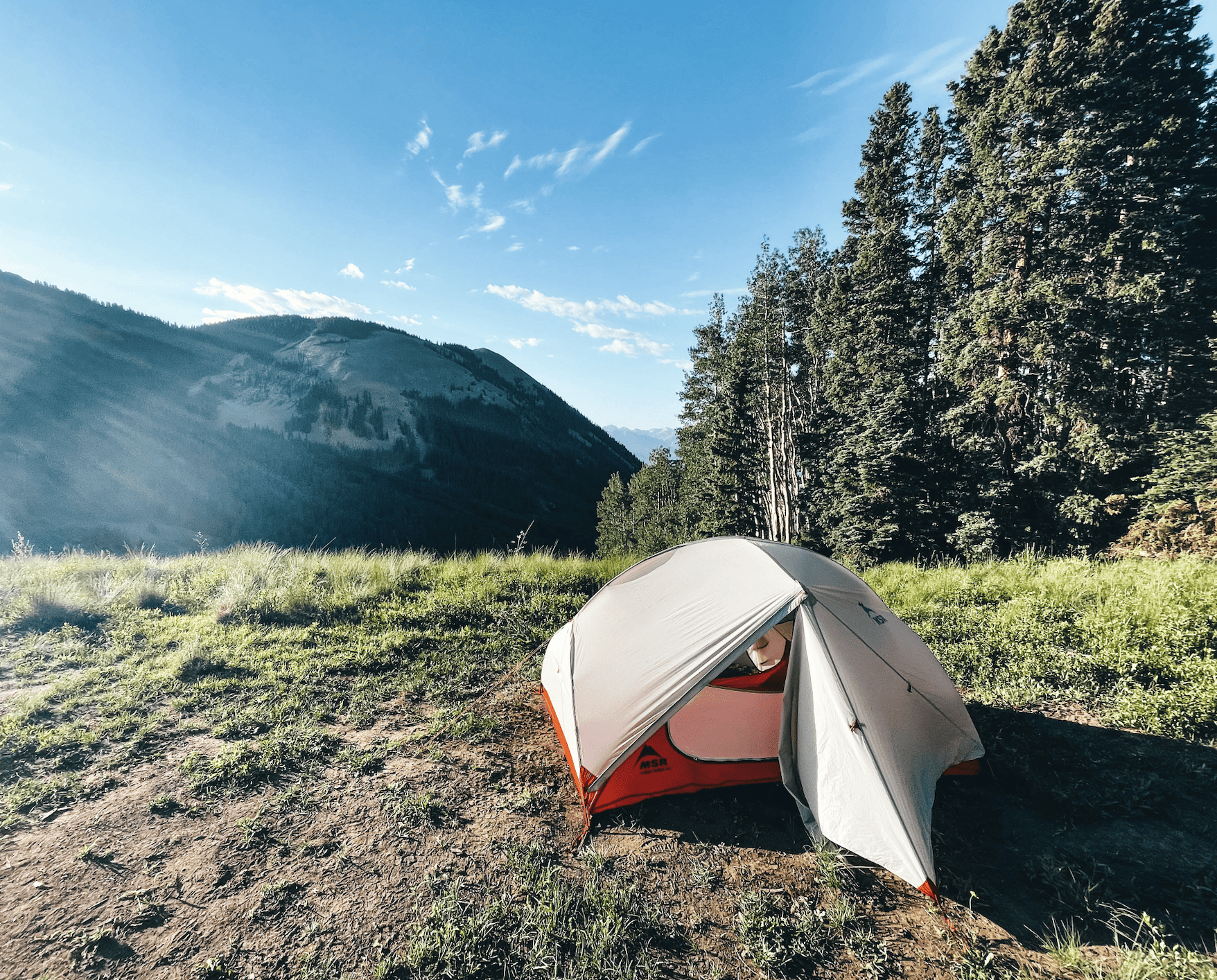
Cold-Weather Sleeping Bag (15–30°F Rated)
Fall temps dip fast. A down or synthetic bag rated to at least 30°F is a must—even if the forecast looks mild.
Tip: Toss a hand warmer at the bottom of your bag for extra toastiness.
Insulated Sleeping Pad
You lose a lot of heat to the ground. An insulated pad adds warmth and keeps your sleep system cozy.
Tip: Stack a foam pad under your inflatable one for extra insulation.
Sleeping Bag Liner
A sleeping bag liner adds warmth and keeps your sleeping bag clean. It’s lightweight, and you can even use it alone on warmer nights.
Tip: Fleece liners are cozier but bulkier—silk ones pack smaller.
Camp Pillow
Don’t sacrifice good sleep. A compressible or inflatable pillow is way better than a balled-up hoodie.
Tip: Wrap it in a t-shirt for that soft “at-home” feel.
Cold-Weather Clothing
Merino Wool Base Layers
Start with thermals made from merino wool or synthetic materials. They wick moisture and regulate temperature.
Tip: Avoid cotton—it holds moisture and chills you fast.
Midlayer Jacket (Fleece or Puffy)
You’ll want an insulating layer for chilly mornings and nights. I like a zip-up fleece for versatility.
Tip: Pack one you can wear around camp and to bed if it’s extra cold.
Waterproof Outer Layer
A rain jacket and waterproof pants are non-negotiable in the PNW.
Tip: Look for pit zips and breathable fabrics to avoid sweating in your shell.
>>> Similar Posts:
Best Women’s Hiking Pants of 2025 (Personally Tested)
Winter Backpacking Gear Checklist (By An Avid Backpacker)
Warm Hat & Gloves
The key to staying warm? Cover your head and hands.
Tip: Keep an extra pair of gloves in your sleeping bag in case one gets wet.
Wool Socks (Multiple Pairs)
Always bring extra socks. Nothing ruins a day faster than wet, cold feet.
Tip: Keep one “sleep sock” pair that never leaves the tent.
Camp Slippers
After hiking, your feet will thank you for wearing these down slippers around camp.
Tip: Choose something with a rubber sole in case you need to make a bathroom run at night.
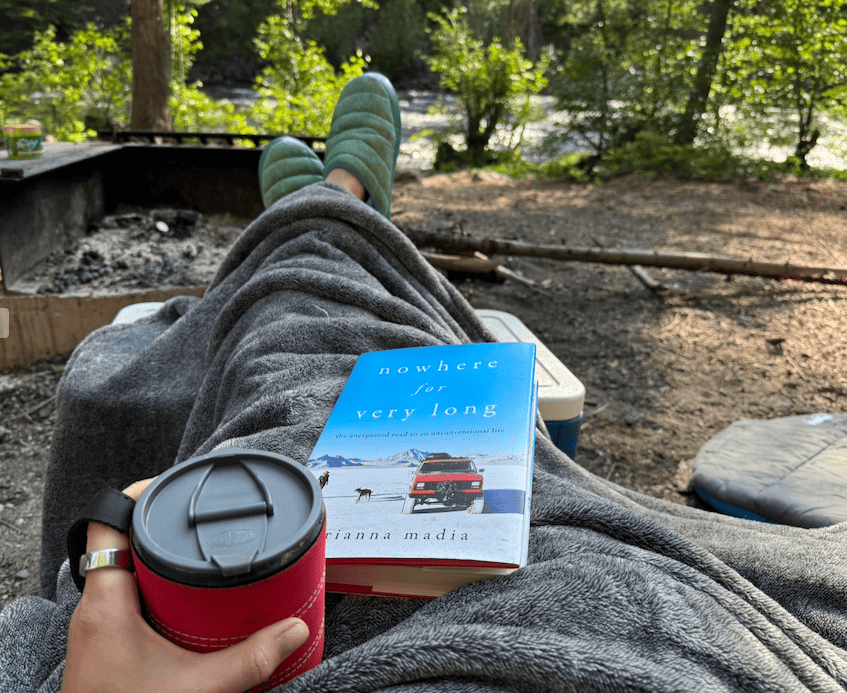
Lighting / Fire
Headlamp
With earlier sunsets, lighting is essential. A headlamp keeps your hands free for cooking or gear setup. (with Backup Batteries)
Tip: Pack it in an easy-to-reach pocket—not buried in your backpack.
Lantern or String Lights
Ambient string lights around camp make everything feel more inviting—and safer.
Tip: Hang string lights under a tarp or in your tent vestibule for cozy vibes.
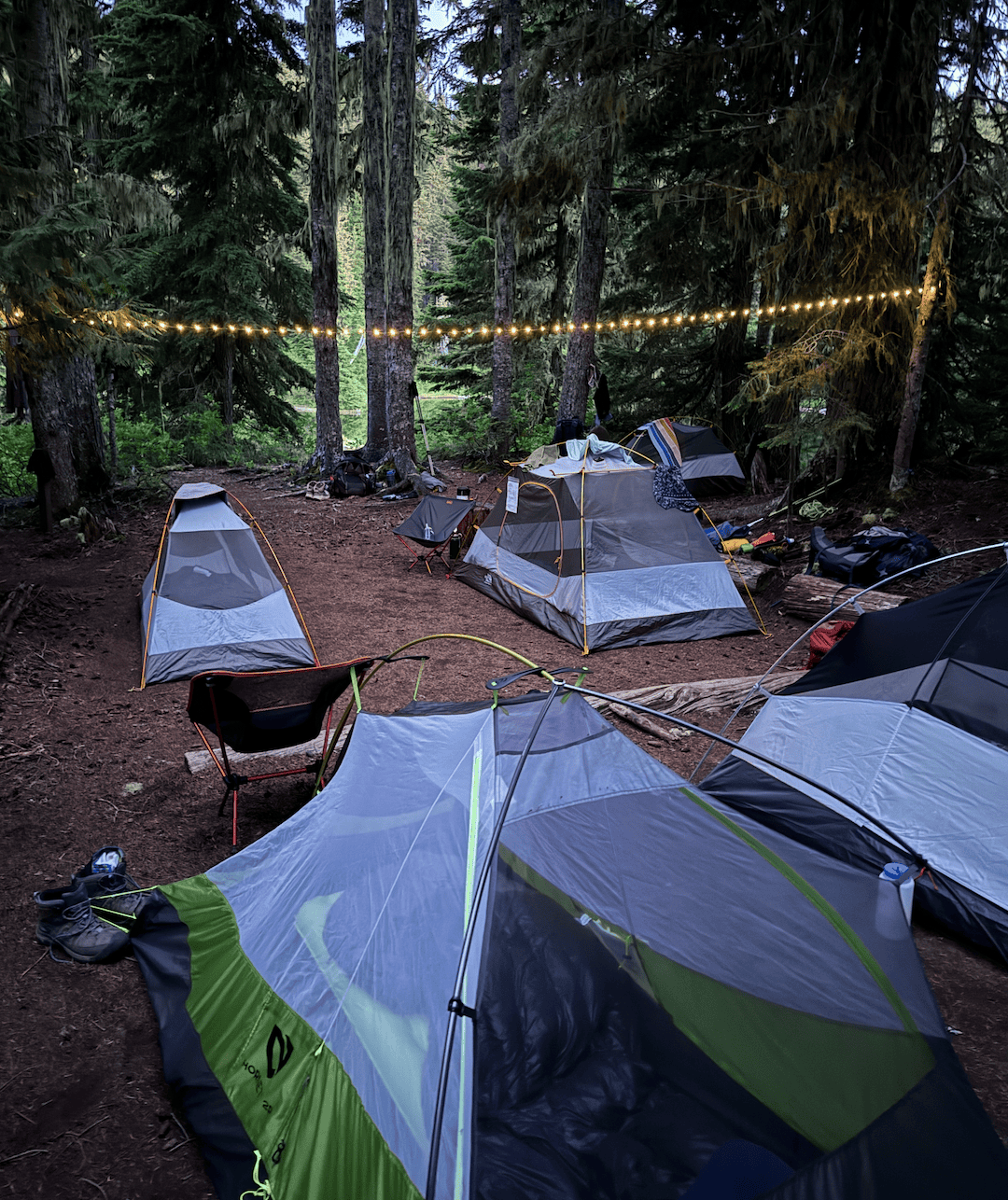
Waterproof Firestarter Kit
Fall wood is often damp. Bring lighters, waterproof matches, and firestarters (like wax cubes or dryer lint). My favorite combination is to use an empty prescription bottle and put cotton balls with petroleum jelly on them in the bottle.
Tip: Store it in a sealed plastic bag to keep everything dry.
Propane Fire Pit
Perfect when there are burn bans or wet firewood.
Tip: Check local fire restrictions—even propane pits are banned in some areas.
Cooking & Food Storage
Two-Burner Camp Stove
Reliable, fast, and easier than cooking over a fire.
Tip: Pre-chop veggies and measure ingredients into zip bags at home.
Cookware & Utensils
Pack a pot, pan, knife, spatula, and eating tools. Nesting cookware saves space.
Tip: Don’t forget a sponge and biodegradable soap for cleanup.
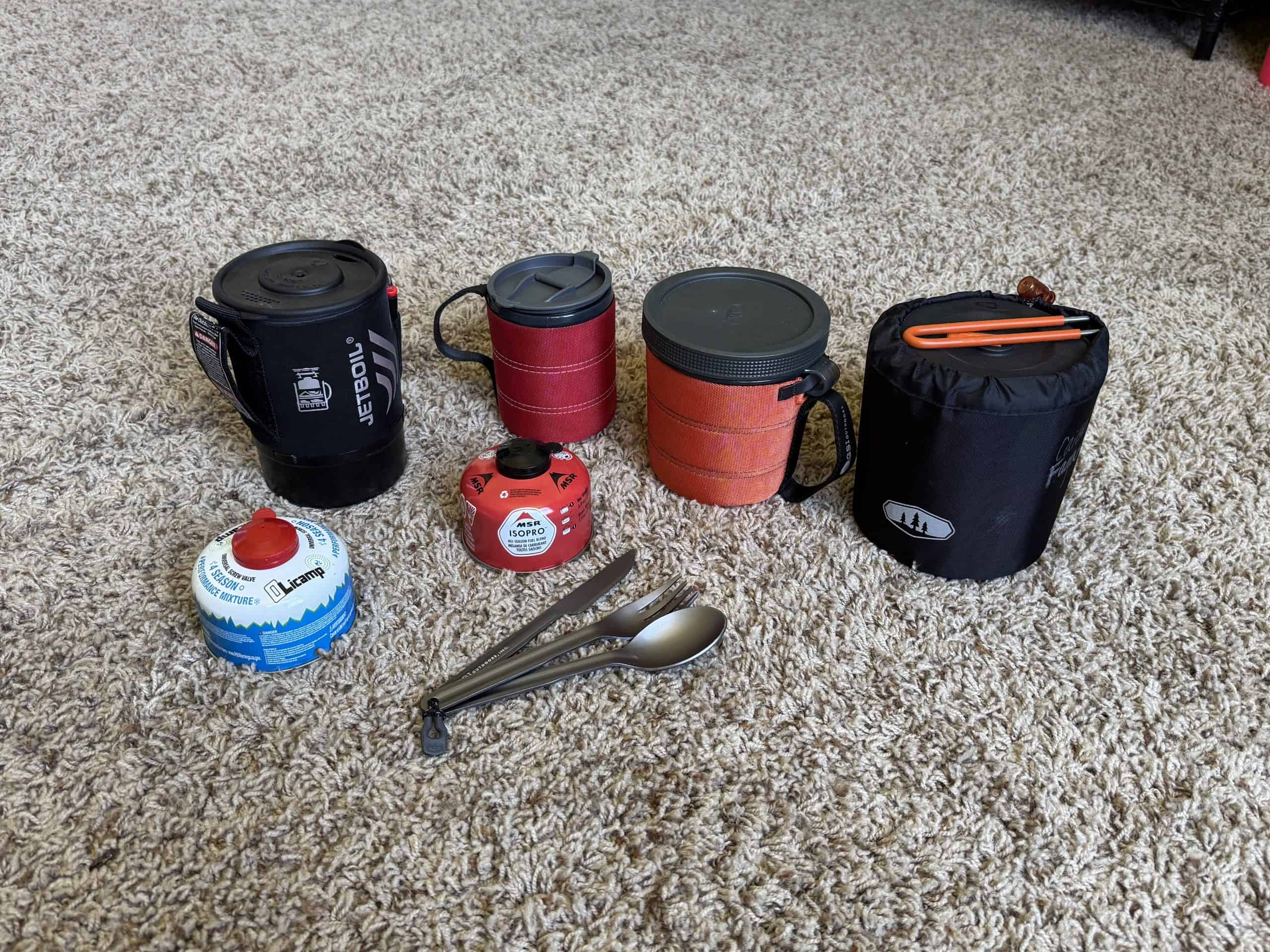
Fuel Canisters
Cool weather uses more fuel for heating water and food. (Bring Extra!)
Tip: Test your stove before you leave—it’s frustrating to discover a bad seal at camp.
Bear-Proof Food Storage
Keep wildlife out and food fresh.
Tip: Place your cooler in the shade and cover it with a reflective blanket to preserve ice.
Insulated Food Bag
Hot meals make cold nights bearable.
Tip: Make soup or chili at home, freeze it, and reheat at camp—it doubles as an ice pack on the drive
Water, Hygiene & Clean-Up
Large Water Jug
Stay hydrated, even in cool temps.
Tip: Warm drinks count too—pack herbal teas or hot cocoa mix
Water Filter
If you’re near a stream or lake, always treat your water.
Tip: Avoid filters that can freeze—tablets are a good backup.
Quick-Dry Towel & Eco-Friendly Soap
Perfect for washing hands, dishes, or freshening up.
Tip: Hang towels from a tree branch or tarp line to dry overnight.
Bathroom Kit
For off-grid sites, pack a “wag bag” or dig a cathole. (Trowel + TP + Zip Bag)
Tip: Always pack out used toilet paper in a sealed bag.
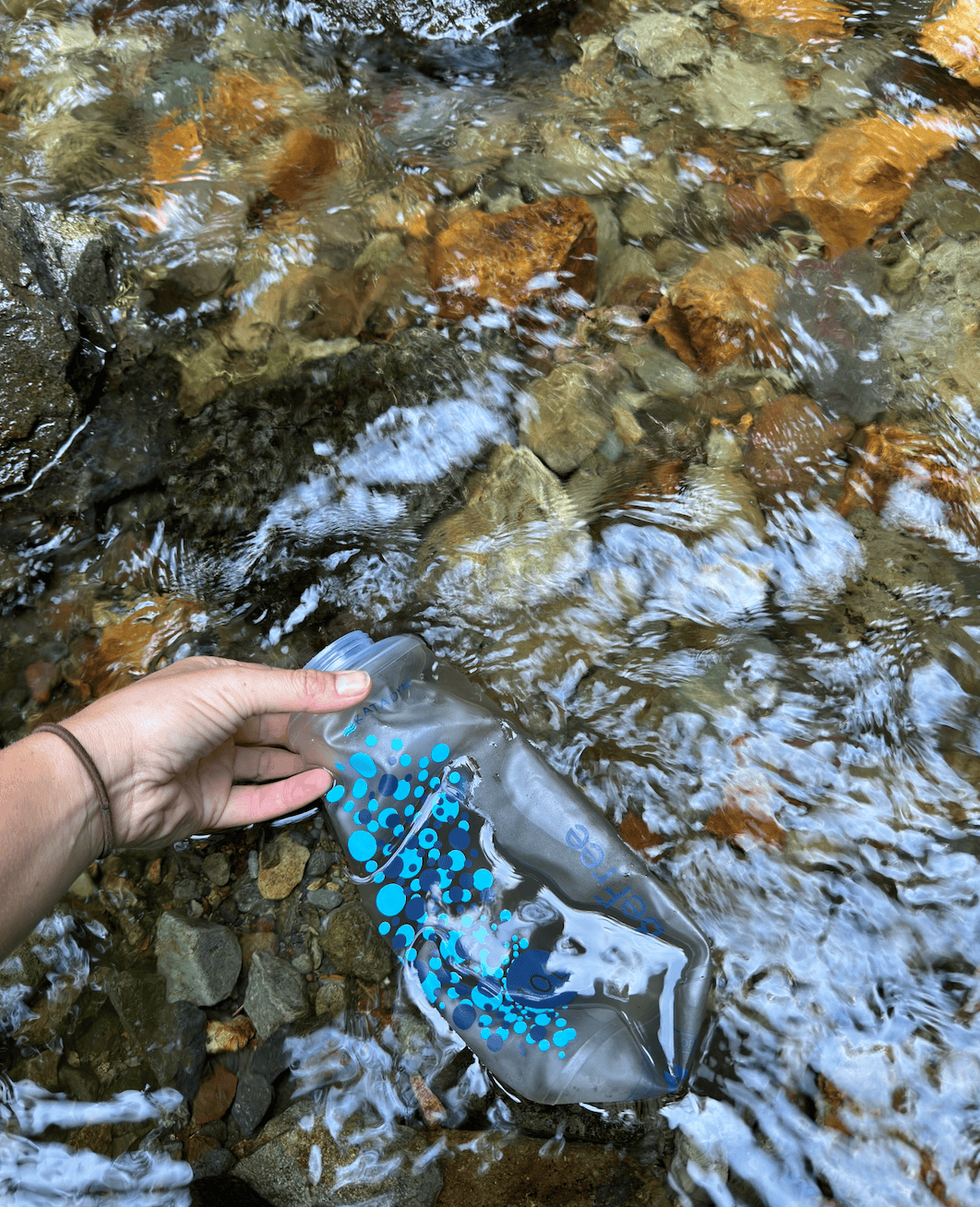
Tools & Comfort
First Aid Kit
Always include blister care, meds, and a tick remover. Add in certain items, if you have a bee allergy, or know you get blisters, bring extras.
Tip: Add hand warmers and a small emergency bivy—just in case.
Multi-Tool
Good for cooking, gear repair, or odd jobs.
Tip: Keep it accessible, not buried in your pack.
Camp Chair + Cozy Blanket
Nothing beats sipping something warm by the fire in a comfy chair.
Tip: Bring a wool or insulated blanket—it’s worth the space it takes.
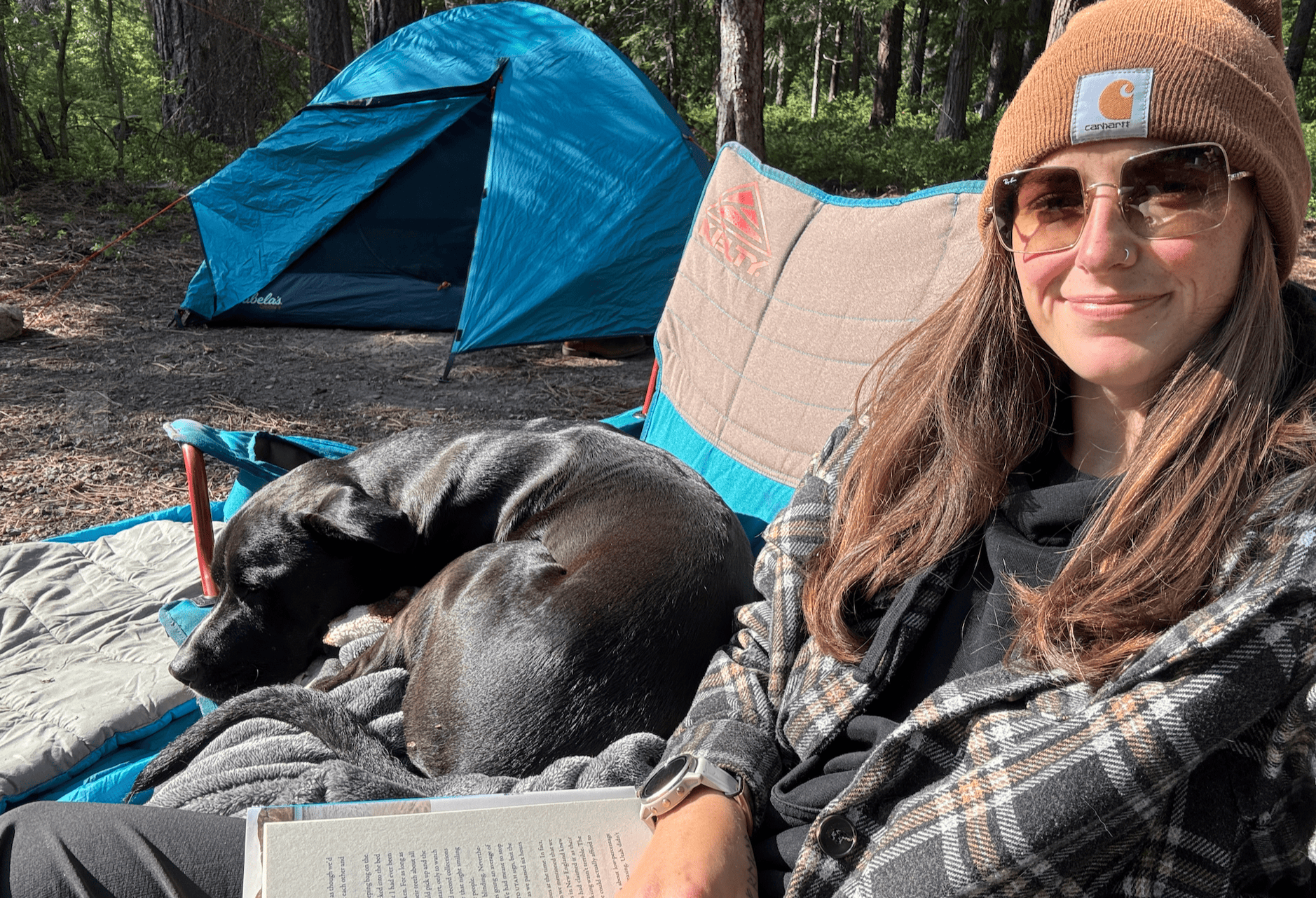
Fall Camping Tips
🟢 Check the weather before you go
Fall weather changes fast; always check the forecast for the exact area, not just the nearest town.
🟢 Get to camp early
Sunset hits earlier than you think. I aim to be fully set up before 4 pm.
🟢 Know your roads
Trailheads and backroads can close from fires, floods, or early snow. I always check for closures a day or two before leaving.
🟢 Make sure your site has water
Not every site has running water in the fall. Bring a full backup water jug just in case.
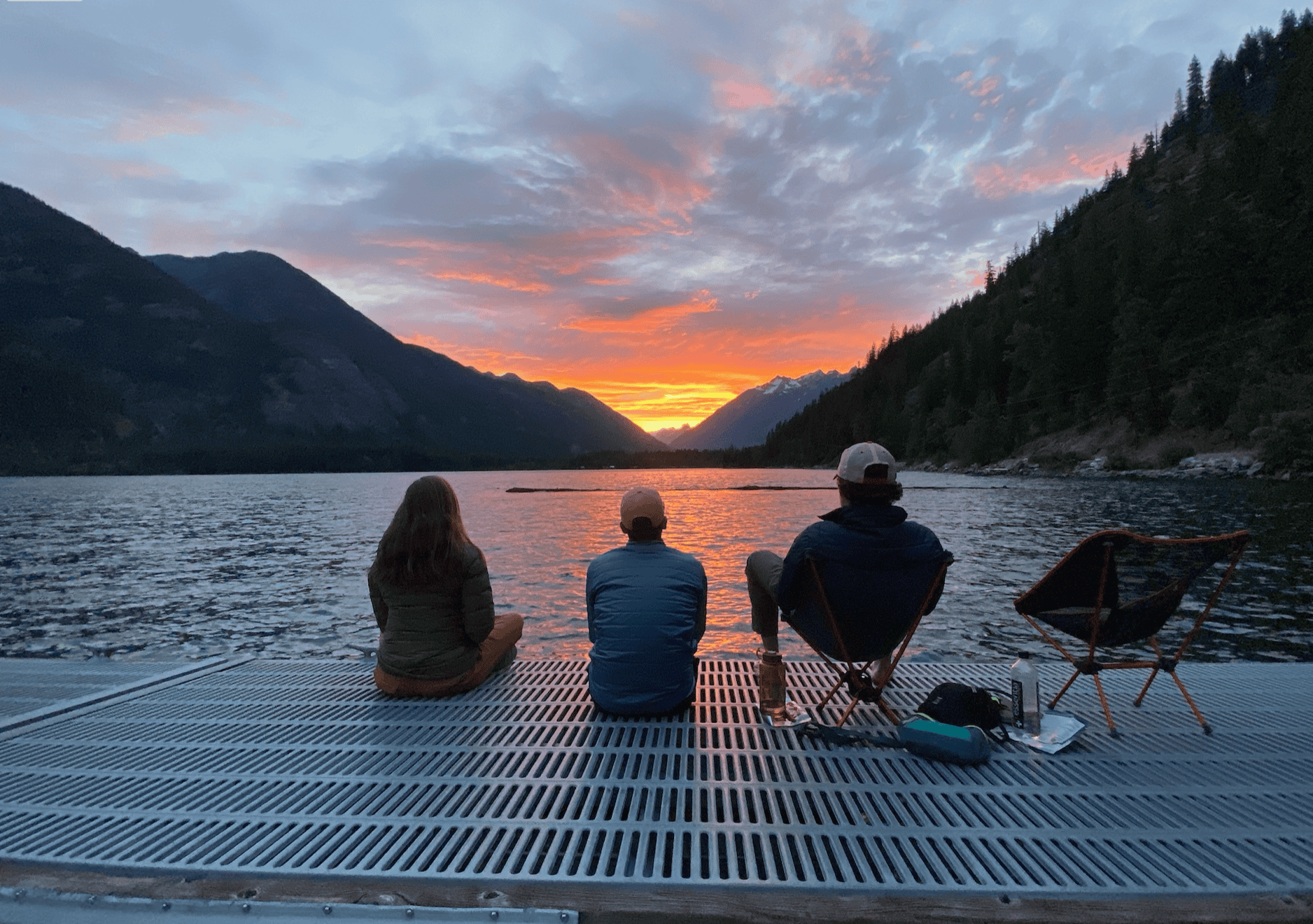
🟢 Reserve your campsite if you can
Some campgrounds stay open, some don’t. I book ahead if it’s an option.
🟢 Bring more layers than you think you need
Always pack a warm base layer, an insulated jacket, a beanie, and dry socks for sleeping.
🟢 Use a camping checklist
I still forget things if I don’t use a list. I keep one saved on my phone and update it every season. Helps me remember the weird little stuff.
🟢 Prep food you can cook fast
Go for one-pot meals or stuff you can heat and eat. Breakfast burritos wrapped in foil and chili in a Jetboil are go-tos.
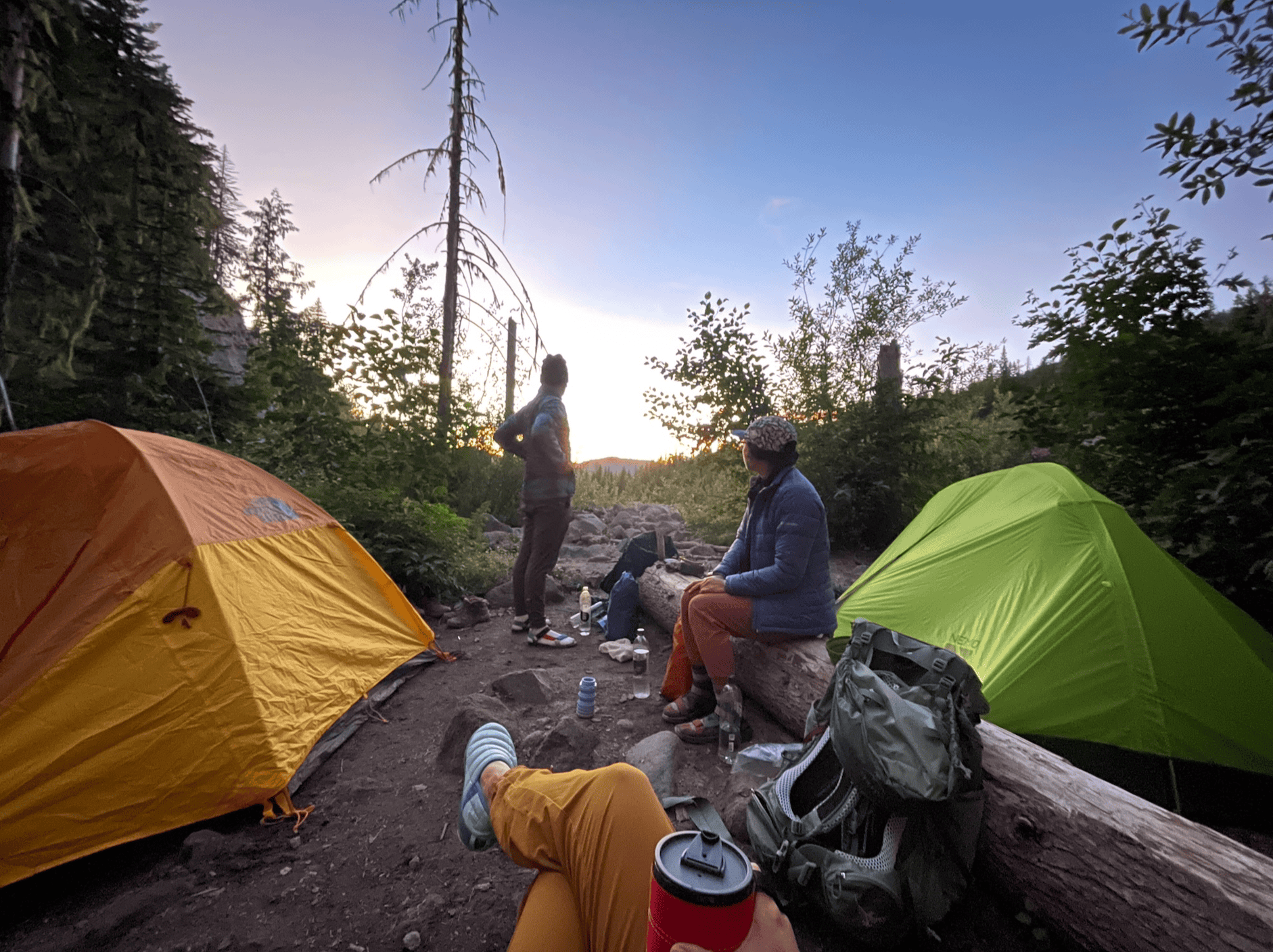
Conclusion: Fall Camping Essentials
Fall camping doesn’t need to be complicated. Pack smart, plan ahead, and you’ll stay comfortable no matter what the season throws at you. The rest is just time outside—exactly where you want to be.
Happy Trails,
Mindful PNW Travels
